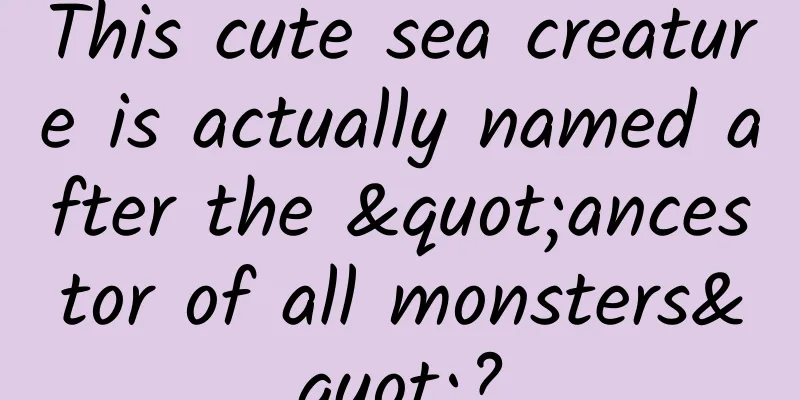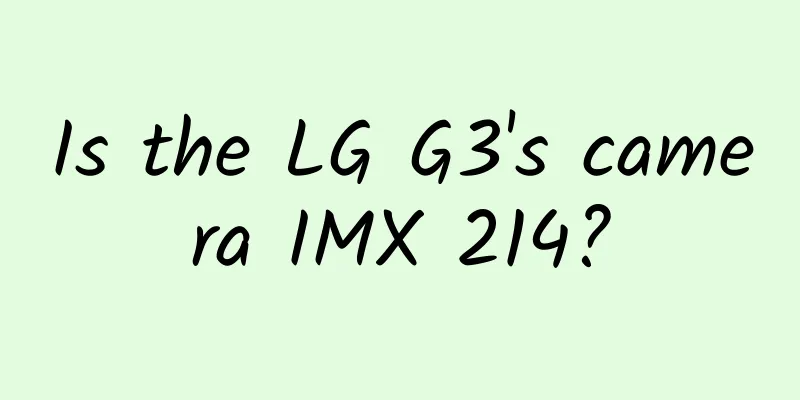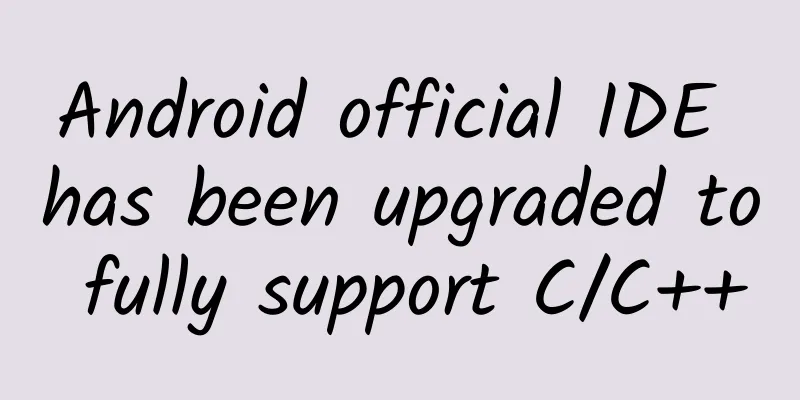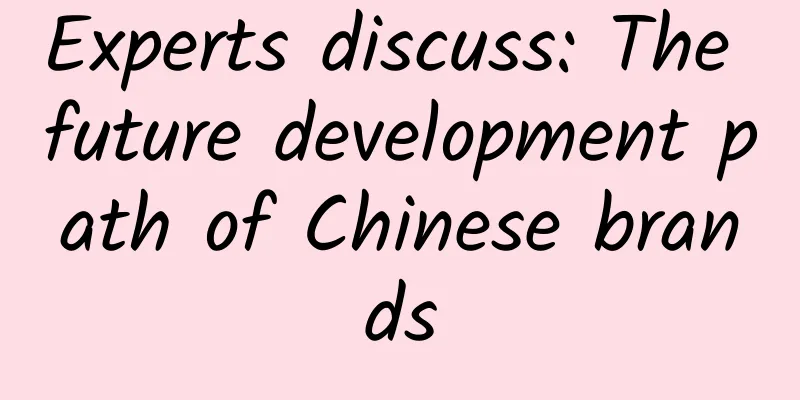From 0 to 1 million users, what operations need to do!
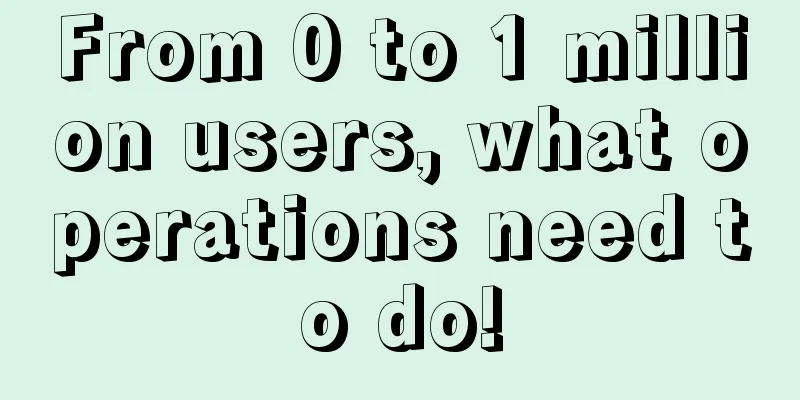
|
Let me introduce myself first. Before last year, I worked as a product manager for payment and Internet finance products for four years at Industrial and Commercial Bank of China and China Huifu Tianxia. As a product manager in the financial industry, you will find that the entire financial industry is not an industry where product drives user growth. Instead, it is an industry where business models and visible benefits drive user growth. In other words, it is an industry that focuses less on product experience and more on models. As a rising star in the Internet industry, a creative young talent, I don’t know if I can still be considered a young talent. I think this industry may be a bit cold for us. So last July, my then colleagues and some of my current partners and I started a business , aiming to develop social and entertainment products. Fortunately, a few big guys invested some money in us before the product was even released, and then we started working on it. In July, we decided to develop a social product called Mask, which is one of the reasons why our company is called Mask Technology. We started working on it after getting the money in July, and the product was launched in September. Then, just one month later, in October, the first product died. But everyone who has started an Internet business knows that starting a business in the Internet industry is itself a process of trial and error, so we soon discovered greater market demand when our first product died. So we immediately adjusted our direction and created a new product, which is our second product, Orange Hotline. I think the second product is operating well at the moment. This product focuses on social voice calls with strangers. Why do I say that this product is operating well? Because it has been online for less than a year, and its highest ranking was ninth on the App Store's social list. When I checked this morning, it seemed to be 54th. In less than a year, during the process of operating and designing such a stranger voice social product, we also found that a common phenomenon in the entire Internet industry is that product functions are becoming more and more homogeneous. Because product functions are becoming more and more homogeneous, differentiation must be made in user experience. At this time, it basically depends on operations to win glory. In an era where products are highly homogenized and rely heavily on operations to win reputation, operations work becomes very important. Back to the topic of this speech, the correct opening posture of operations, I would like to ask everyone here: I wonder how many of you here are working in the Internet industry and how many are doing operations work? I would like to ask if anyone can share what operation is? Or to change the question, is there anyone who can share with us why we need to do operations work? Everyone is as shy as me, so I will share my thoughts myself. My understanding of operations: 1. In a broad sense, operations work is for, why do we do operations work, in a broad sense, we want a product to develop stably and sustainably. For this purpose we have to operate. 2. In a narrow sense, we have three objectives for operating Internet products. The first is to improve user retention. Second, increase the activity of retained users. The third is to provide support for the promotion of our products. For an Internet product, we often see many words about Internet product operations , whether on Zhihu or other experience sharing platforms, such as: user operation, community operation, e-commerce operation, event operation, and market operation. I wonder if you are confused or bewildered by these words? Anyway, when I see so many words, I feel a little confused. Is there any intersection between user operation and community operation? In fact, there are many classification dimensions for operational work. The operational work classifications we see do exist, but the dimensions are different and there is indeed overlap. Here we simply distinguish the operation of Internet products from one dimension, which is whether the objects directly affected by our operation are humans or non-humans, humans or non-humans. 1. If the objects directly affected by our operations are humans, then I call it user operations. 2. If the operational work we do directly affects non-humans, then I define it as content operation. In the process of making social products, we have accumulated more experience in user operations. The operation system and knowledge concepts of the entire Internet product are very large. I will not tell you too much here. Let’s focus on user operations today. In fact, the knowledge system of user operation is also very large. As I just said, in a narrow sense, the operation of Internet products has three purposes: The first is to improve user retention rate The second is to increase the activity of retained users The third is to provide support for product promotion. Many times, our product dogs and operations dogs, I don’t know if this is discriminatory, many times when product managers and operations staff are working, we focus more on attracting new users or improving the activity of retained users. But one thing that is often overlooked is the lost users. For mobile Internet products, lost users definitely account for the majority, just like a pyramid structure. Basically, among the mobile Internet products that are not from BAT that you can name now, 90% of them have lost users that account for more than 80%, especially for products with over 10 million users. For a mobile Internet product, the larger its user base, the more users will be lost. So if you have studied business administration, you will know that there is a theory that the cost of maintaining an old user is one-fifth of the cost of acquiring a new user or even lower. Therefore, in the process of user operations, you can change your thinking and do more cost-effective things, instead of focusing on improving the activity of retained users, to thinking from another perspective, whether it is possible to recall some of the lost users. At this time, the cost is much lower than attracting a new user, and what you do will also bring greater value. Coincidentally, some time ago, quite recently, we conducted a campaign to recall lost users. We did this through text messages, a very simple method, to send text messages to our former users. It cost about 6,000 yuan, and brought back 30,000 lost users. The average cost of recalling a lost user, I'm not good at math, is about 0.2 yuan. But now the cost for a mobile Internet product to acquire a user is more than ten yuan. So this is very cost-effective. So today I would like to share with you a case I worked on before on recalling lost users. Regarding recruiting lost users, I just said that our product is a product for voice calls to strangers. At the same time, there is one point I didn’t mention. Girls can earn money by chatting on this product. Girls can make money by chatting. You can give it a try. For a product with such attributes, I want to recall lost users. First of all, I must determine who the lost users are. I need to define the next one: how do I define my lost users? I have so many users, which ones are the churned ones? How to judge? Has it not been opened for a week, two weeks, or two months? At this time I need to analyze and define. Often we need data support before we do our work, and then we go to pull the data. We found that our active users open the app an average of 2.3 times per week. So can we define users who have not opened my app for more than a week as lost users? It can't be that simple. If we dig deeper into the data, we will find that although our active users only open the app an average of 2.3 times per week, this is the average. When we are actually doing user operations, we need to consider something broader and we need to look at the value of shortcomings. Because the average value may be pulled up by some high-frequency users. Maybe a user opens the app more than twenty times a day, so the average value is pulled up. However, there are still quite a few users who only open the app once every three weeks, but they are still active users and have not left. At this time we need a value, the short board value. We found that in our app, the laziest group of active users accounted for 11%. They would open the app about once every 23 days, and each time they opened the app, they would still have some user interaction and would still use the product to talk to some strangers, so they were still not considered churn. If we add an error margin of 7 days to the value of 23 days, it will be exactly one month. So I decided at that time that if any user did not open my app for more than one month, I would define them as lost users. At this time, I found out which users had lost data. I pulled the data of users who had not logged in in the past month, and there were hundreds of thousands of records. I need to analyze this group of users. I must analyze why they left. Only after the analysis can I know how to bring them back and what are the points to bring back these lost users. Why did he download this app in the first place and then leave? We need to consider from the user's perspective what reasons may cause them to return to your app. At this time, we need to analyze the relationship between the user's attributes and his behaviors. At this time, we will use a common tool , which is user portrait. Is there anyone here who has used user portrait tools or studied user portraits? Could you please tell me what you understand by the concept of user portrait? Audience: In our company, user portrait refers to the background of this person. I need to find a lot of background information, as well as his behavior and what kind of behavioral data has been generated in our products. That’s roughly it. Xu Weifan: This colleague said it very well. There are two very important points about user portraits: First, you need to know the user’s background. We can talk more broadly about his attributes. Second, what kind of behavior will users with these attributes produce? Here I’ll show you a user portrait provided by Tencent’s web analysis. Tencent's web analysis will provide webmasters of some websites with information about who their visiting users are, based on their age, education level, and occupational distribution. These are all user attributes and are also the basis for creating user portraits. You can also look at this picture to see what the average daily car rental consumption of some tenants in Shanghai is like, and what the frequency of returning the car to a different place is like. For the same kind of returning the car to a different place and the average daily car rental consumption, what is the frequency for users in Beijing and Guangzhou? Determine a category of users based on geographic location, and then analyze user behavior based on the dimension of this geographic location, and then judge which type of user will have what kind of behavior. The user portraits of our Internet products, generally speaking, there are four to eight categories of user portraits for mobile Internet products, but there is a method to this classification process and it cannot be broken down arbitrarily. The process of creating a user portrait is like the process of labeling a person. In this labeling process, we will find that a person will have many labels, some of which will be repeated, some labels of A and B will overlap, and some labels of B and C will overlap. For example, an entrepreneur’s personal tags may include Tencent, Apple, iPhone, 360, Jack Ma, etc. We will find that these labels have some overlap, but when we make user portraits, labels can overlap, but each type of user portrait must have a characteristic, that is, uniqueness, that is, type A users are definitely not equal to type B users, and A is not equal to B. At least from an analytical perspective, they are independent of each other. Only then can you make an independent analysis of the behavior and perform different product and operational optimization work on the resulting behavior. Let's talk about our product again. I just said that our product is a voice social product. At this time, it also has many user attributes, such as age, gender, region, occupation, personality labels, preferences, and different possible behaviors. Tags can be divided into two categories: 1. Static labels, such as name, occupation, age, and geographical distribution, are static labels and are relatively stable. 2. Dynamic tags are for the product itself, such as the frequency of use of your product by this user, the time period when this user opens your product every day, or the time period when he often opens your product. The length of time this user may stay on your product each time, these are some dynamic tags. As a voice social product, we had many dimensions to analyze and many tags to find, but in the end we had to find a particularly important tag to classify users so that we could determine why these users left and what methods could be used to bring them back. Finally, among the traces left by users on the product, the more costly the traces are, the greater their weight will be in your user portrait analysis, and the more helpful they will be. In voice social products, what is the data that users need to spend the most money to retain? It's the length of the call. The length of time users spend on this product every minute is the most authentic and reflects the stickiness of the product. So we classified them according to the duration of the calls. We classified the lost users who have not logged in in the last month into three categories: those with call duration of more than three hours, those with call duration of 20 minutes to 3 hours, those with call duration of 1 minute to 20 minutes, and those with call duration of zero to 1 minute. This is the most valuable label that users need to spend their own time to leave. In addition, call duration is a quantifiable dimension, which facilitates our classification. 1. After we have classified them into types, we find that S-type users have the longest call duration. What behaviors do they generate? There is stickiness to the product itself. The call duration is more than 3 hours, and his friendship has been established on the product. If this user leaves at this time, it will be a pity for the product, so we define them as high-quality users who have a good experience with the product. We define such users as the highest level S. 2. Then there are users whose call duration is between 20 minutes and 3 hours. This type of users have made calls, which means they have used the product and the core functions, but have churned away. Maybe they did not meet anyone they could talk to during the chat, or they may be test users who are trying out new products. This type of user has value, but not as high as S-level users. We define them as A-level users. 3. Then there are those with call durations of 1 minute to 20 minutes. This type of user has experienced the software and passed one to three calls, but may not have met expectations. This may be due to the lack of audio during the call, or the user encountering low-quality or obscene people, which may have led to the loss of users. This type of people is different from Type A, and the value they produce is not as high as Type A. We define them as Type B. 4. The last part is from zero to 1 minute. This type of users are often easily led by gimmicks. They may see some of our advertisements, or they may be influenced by their friends around them and are easily infected. They are often very self-indulgent and think how great the products are. They have a strong desire to try new things and are willing to experience some products. However, their product retention rate is often very low. We call these users Type C users. After they enter the software and find that the functions or experience do not meet their expectations, they will quickly abandon the software and will not experience it again. They will not be interested in continuing to play. This is our analysis of user behavior, which reflects the user's personality characteristics. 1. S-type users are very concerned about interesting people they have chatted with. They care more about the chat itself and don’t care about the quality of the functions, the interface, etc. For these people, if we need to send text messages to activate them and tell them that we have upgraded the UI and fixed some bugs, they actually don’t care. For this type of user who sends a recall text message, the point we need to grasp is the connection with the friends he has chatted with on this platform, and we don’t give him a prompt for UI upgrade. We need to give him more sticky copy that is related to the user’s friend relationship chain. 2. For Type A users, they know what the product does, but their stickiness is not strong. They are willing to try new products, but their enthusiasm comes and goes quickly. They are strongly driven by gimmicks. In other words, they are easily fooled. For these users, the copy we produce needs to continuously motivate them and deliver new product value, because they are easily fooled by gimmicks. Therefore, we should output things that look fresh and interesting to this type of users. They are early adopters, they dare to try new things, and they are willing to try. 3. Type B users will use the product more actively than Type C users, and will have greater tolerance and fault tolerance for the product than Type C users. However, his understanding of the core value of the product is limited, and he may not be your target user, but do you want this user? I think we should not reject any user as long as they do not affect the atmosphere of the platform. Our copywriting for this type of users needs to do some user education. 4. For users who have the shortest call time or even no calls at all, they are very picky. They are willing to try new software, but are not willing to spend a lot of time experiencing these new software. These users are often girls. Many of you may have downloaded a lot of apps, but they delete them quickly. In the end, the only ones left may be WeChat, Weibo, QQ, and Meitu XiuXiu . This type of user will also be interested in new gimmicks and the delivery of some new product values. He will be willing to try it, but may leave again after being recalled. It doesn’t matter, we’ll recall it first. After determining the characteristics and personality traits of S-type, A-type, B-type, and C-type users, as well as the core content points of the recall copy to be pushed, we can start writing the copy. 1. For S-type users, that is, users whose calls last more than 3 hours, as mentioned earlier, because they have already established interpersonal relationships, they are more concerned about the established relationships than the functional requirements of the software. You need to use social relationships to tell them that there are many friends they have chatted with before waiting for them on the platform. The output copy is, you haven't been to the Orange Hotline for a long time. Did you know that you missed 7 calls and 12 red envelopes during the short time you were away? Please contact them to upgrade to the latest version. 2. For Type A users, they know the product functions, but their stickiness is not strong, and product managers and operations personnel need to continuously organize activities to motivate them. So the text we output is that the chat friend who talked to you on the Orange Hotline last time is looking for you all over the world, so go and see who he is. In addition, we will add the nickname of the person he last chatted with here. 3. Type B users, whose call duration is 1 to 20 minutes, have used the product but have not developed a strong attachment to it. They may have downloaded the app for the purpose of trying something new. But I stopped before experiencing the core value of the product. If we can guide these users to understand the core value of the product and educate them, they may become Type A users. Therefore, we also need to continue to provide product and operational incentives to constantly bring them back, and each output should come with a new gimmick, because as mentioned earlier, both Type B and Type C are sensitive to gimmicks. We want to output something with gimmicks, so at the end we will output a sentence: two chat friends have sent you red envelopes with messages. When we sent this recall message, our previous version did not have the function of leaving messages for red envelopes, so we reminded him to upgrade to the new version to check, and added a sentence that it would expire if he did not receive it. So why don’t you go and receive it to see who sent what and how much money is? People are curious and will try to see how much money has been distributed. In addition to the URL, this one also includes a very short product introduction. 4. For the largest number of users, whose call duration is zero to 1 minute, they may be more picky in normal times. As I said just now, most of them are women. For this type of users, we should be more proactive in admitting our problems. Because they are very picky about products, they may leave if there is even the slightest defect in the product. At this time, when you try to argue with a girl, how does she feel when you reason with her? At this time, you should not try to reason with her, but admit your mistake and tell her, "I'm sorry, master, I was wrong." So when we were producing the recall copy, we were also very sincere. I know I was wrong, and I know I didn’t do well enough before, but I have tried my best to change it. Can you give me a chance? Some of these users may come back. Yes, that's what we did. In fact, the recall of lost users and user portraits of real products is a very large system, but time is limited today. I shared this small case to tell you that even if you don't make a very large user portrait based on big data analysis , you can also use simple user portrait methods to classify users and output targeted copywriting. The final result of this matter was that we recovered 30,000 users for 6,000 yuan, which is a very cost-effective thing. What I just showed you is a basic method of user profiling. The advanced method will be more complicated. It can be not just labels, but also labels plus weights, and a weighted scoring mechanism. Deep learning allows machines to learn and analyze user portraits, which is more comprehensive than subjective analysis by the human brain. Labeling and weighting, and machine modeling often still require the support of big data, otherwise they cannot be used. If it can be achieved with the simple methods mentioned above, don't use these advanced methods. When we finish an operation, I think one of the most necessary things we need to do is to review it to see whether what we did before was carried out according to plan and whether the effect of the operation has met expectations. Only by looking at what was not done well in the past can we know what can be improved in the future. If the operational work is not reviewed, it will definitely be unsystematic. Doing it once or twice will not bring any improvement to yourself or the company. We did the recall, and after reviewing it, we realized that since it was cost-effective, we should do it more than once. Then the second decision we made was to recall lost users once a month. So sometimes, our operations work, as I said just now, is a lot of analytical work. In fact, in addition to being a mental job, operations work is more like a physical job. It is a job that requires continuous iteration and continuous work, and sometimes it may even be a job that mechanically replicates some things. And every time you copy the previous workflow, you have to find out where the previous workflow was not done well, find out where the problem is yourself, and then optimize it. So it is not only a mental job, but also a physical job. After completing the most recent recall of lost users, we were also reviewing and found an area that was not analyzed in the previous user portraits. We found that the ratio of our users who watch women is almost reaching the point where the ratio of active female users exceeds that of active male users. For stranger social products, the proportion of male users is much higher than that of female users , but the number of active female users on our platform is higher than that of active male users. Then we wonder what kind of female users would be interested in stranger social products? I would also like to ask here, how many girls here have used Momo? I just like you hypocritical people. Back to our product, we analyzed and found that most of the active female users on our platform are of marriageable age and most of them are single. Then we discovered that the reason they want to chat with strangers is certainly not to have sex, but more because they have a lot of worries. Or maybe it’s not worries, but they are just told by their boss during the day that some things are not convenient to communicate with colleagues at a safe distance, so they need to find someone they don’t know to talk to. At this time, we discovered another market, which was extended around this group of users. Among this group of active female users, 80% are practitioners in the Internet industry. Then I don’t know if I can say one-sidedly that there are more single women working in the Internet industry than in other industries, but we have discovered a larger market, which is the marriage and love needs of women working in the Internet industry. So this year, on November 11th, Double Eleven , and on November 14th, we will also hold an Internet vertical blind date conference in Jing'an District. All boys and girls here are welcome to participate. This is the idea and process that we use to follow up again and again, to create user portraits again and again, to develop operational strategies based on user portraits, and then to continuously adjust and carry out operational work. APP Top Promotion (www.opp2.com) is the top mobile APP promotion platform in China, focusing on mobile APP promotion operation methods, experience and skills, channel ASO optimization ranking, and sharing APP marketing information. Welcome to follow the official WeChat public account: appganhuo [Scan the top APP promotion WeChat QR code to get more dry goods and explosive materials] |
<<: How to build a reasonable advertising account structure?
>>: 10W+ popular article titles and copywriting optimization tips!
Recommend
High-tech underwear for body wear! Is graphene underwear a waste of money?
"Dehumidification and sterilization", &...
How does Pinduoduo make people addicted?
Pinduoduo is well aware of the pain points and pl...
Can Alzheimer's disease be predicted? New evidence and suggestions on the causes of Alzheimer's disease
New evidence and suggestions on the causes of Alz...
Popular Science | The "little secret" of choosing down jackets
It is another cold winter, how to keep warm in wi...
NetEase Yanxuan product analysis
This year's Double 11 is in full swing. Liang...
Deployment of mobile terminal chips to promote the independent development of 4G industry
Mobile communications is a strategic emerging ind...
Android Control WebView
How to open a website in an Android app? Google h...
iOS 9's "Wallet" feature will allow merchants to send product updates
Recently, Apple announced information related to ...
Cocos2d-js launches tutorials for various platforms to help developers generate revenue across all platforms
The "Cocos 2015 Developer Conference (Spring...
The third round of the Aite Tribe Story Collection with prizes has begun~
Aiti Stories - Recording the real workplace stori...
How to plan brand marketing for the Chinese Valentine’s Day?
As a traditional festival, couples are busy getti...
Android TV becomes bricked after installing random software: FBI demands $500 to unlock it
Nowadays, smart TVs are becoming more and more the...
We have clearly seen the evolution from single cells to humans, so why do people still say that biological evolution has no direction?
The day before yesterday, we happened to talk abo...
Murphy's Law: 20 ways to avoid bad luck in life
Through the exaggerated expression of Murphy'...
Who decides to breathe? The mystery of the production of oxygen in the early Earth
Produced by: Science Popularization China Author:...


